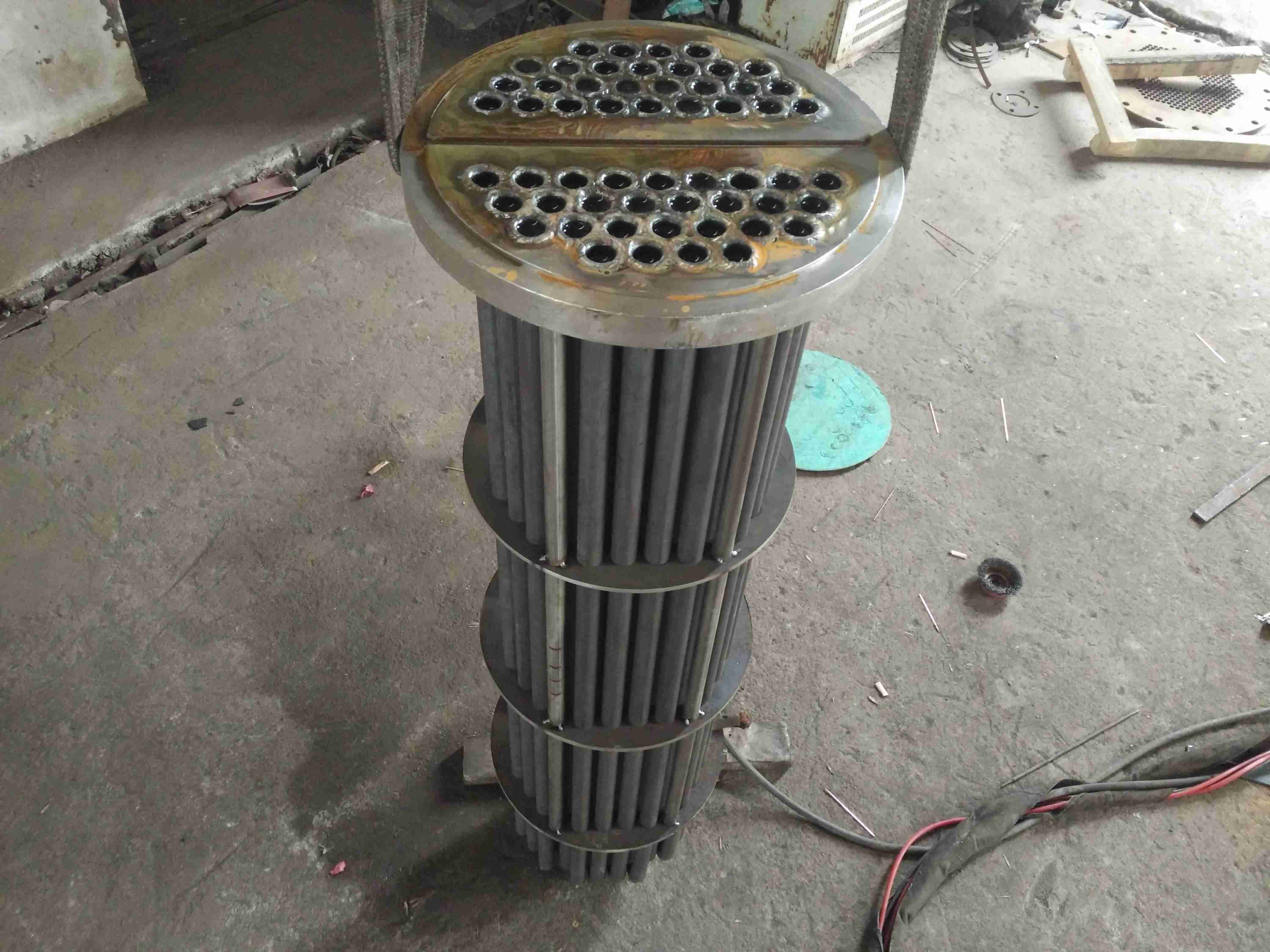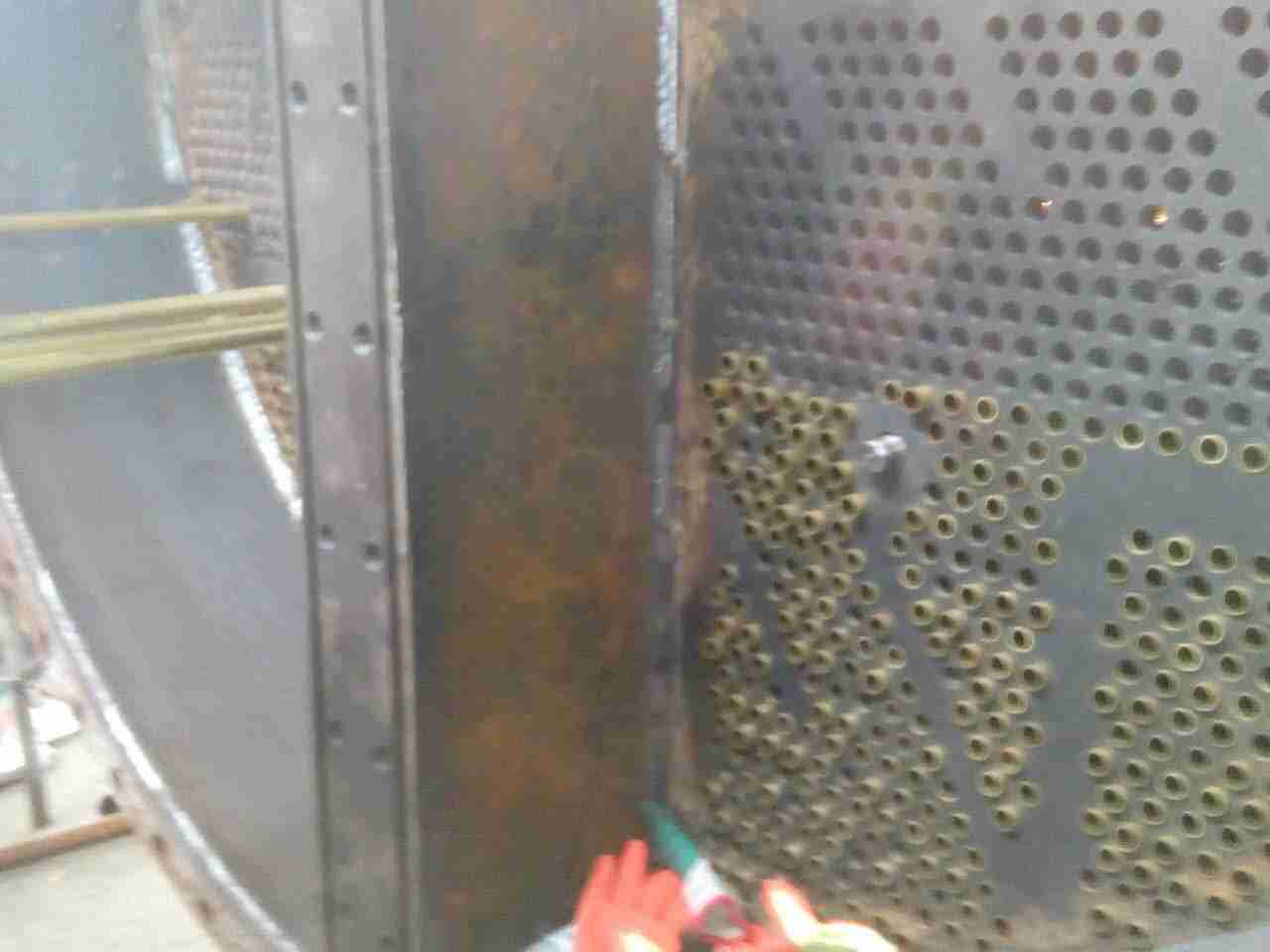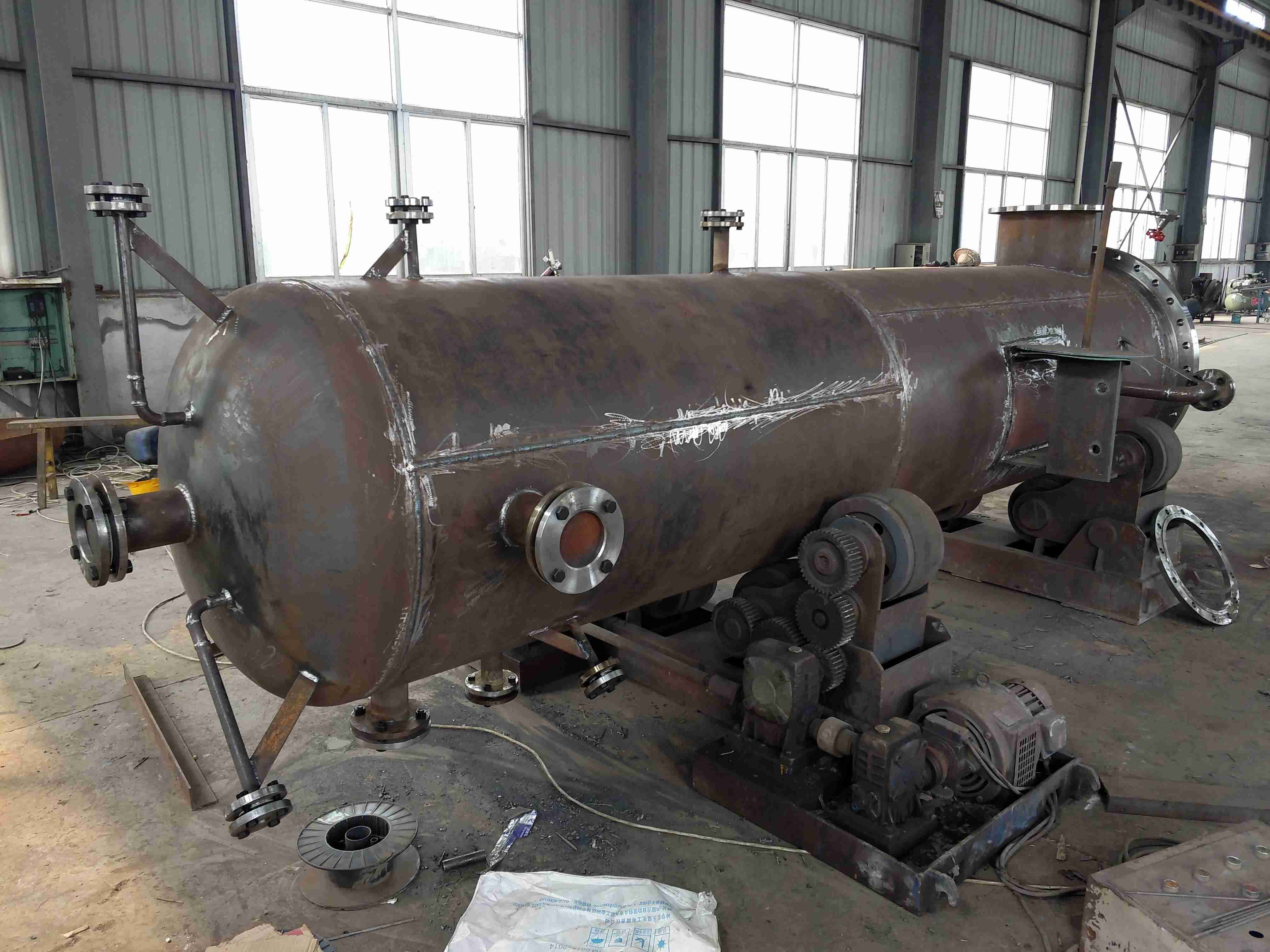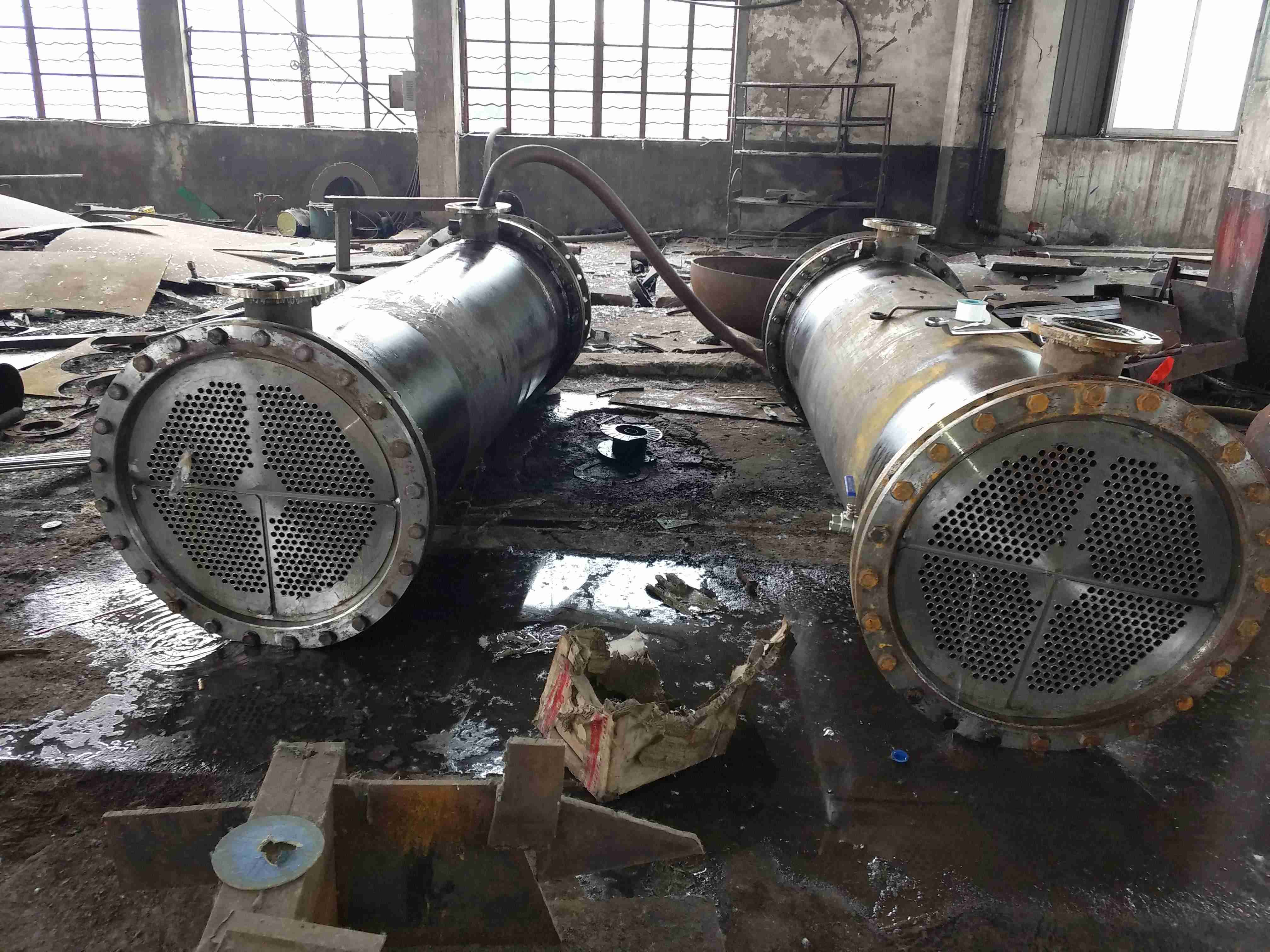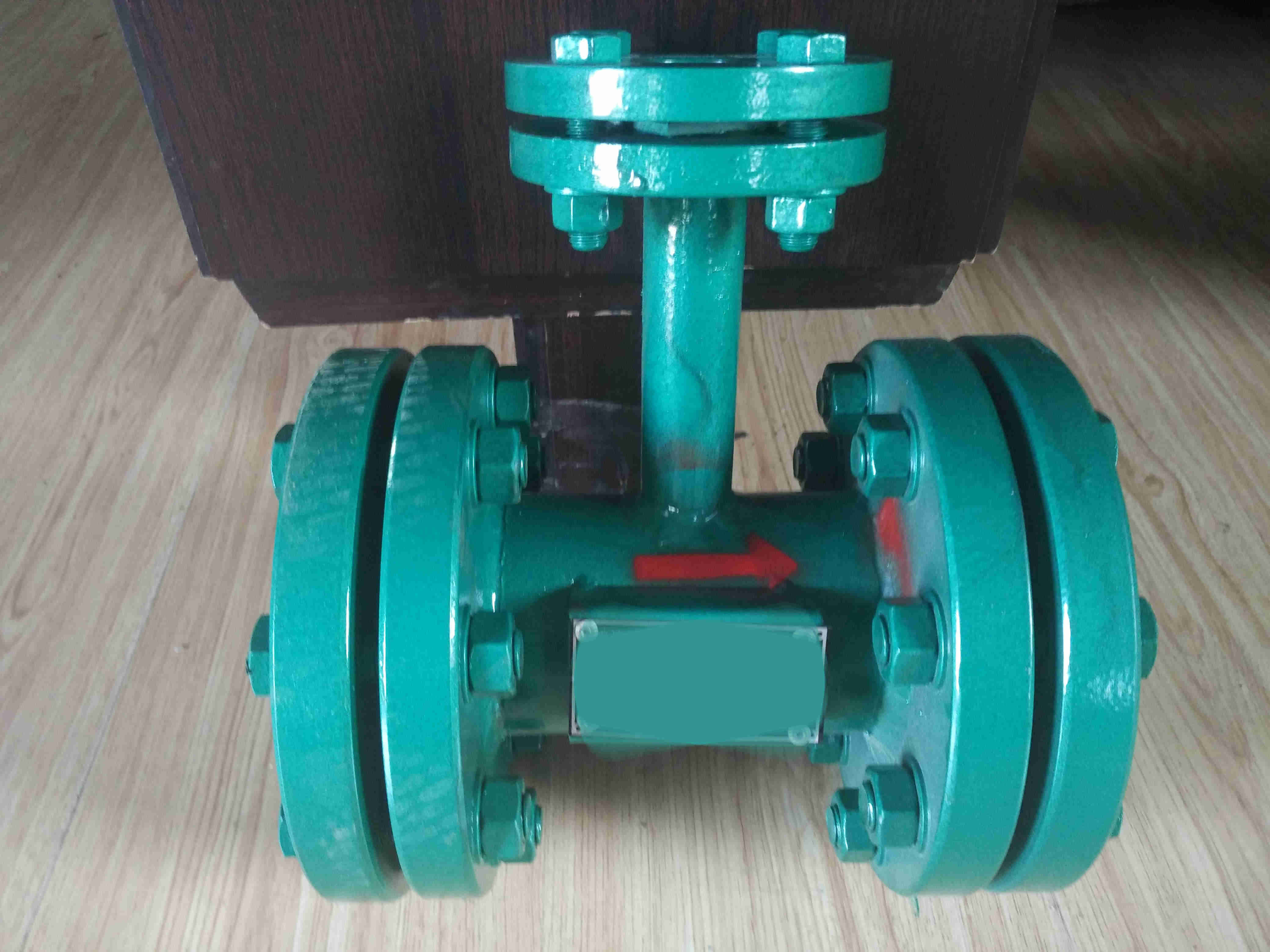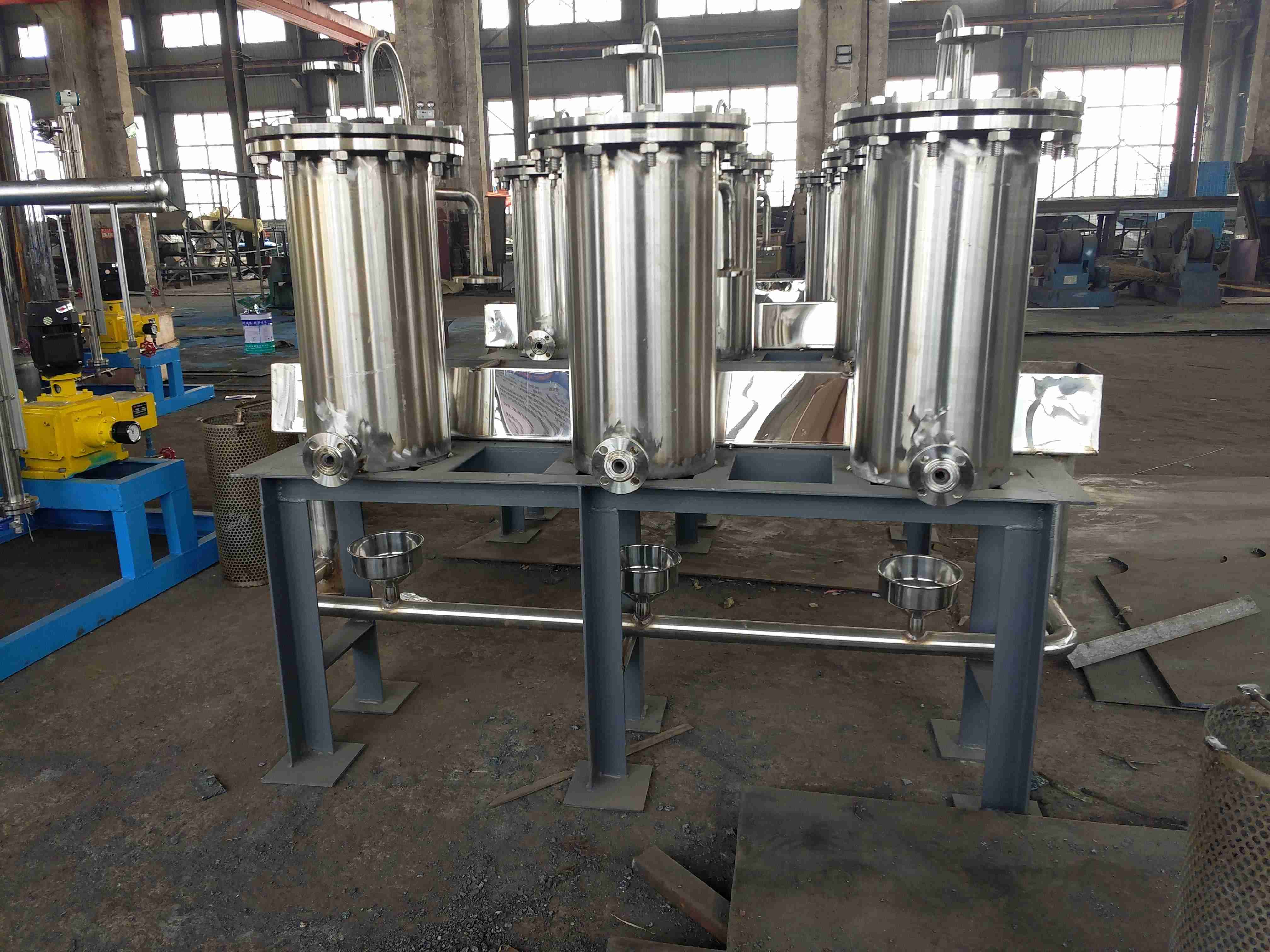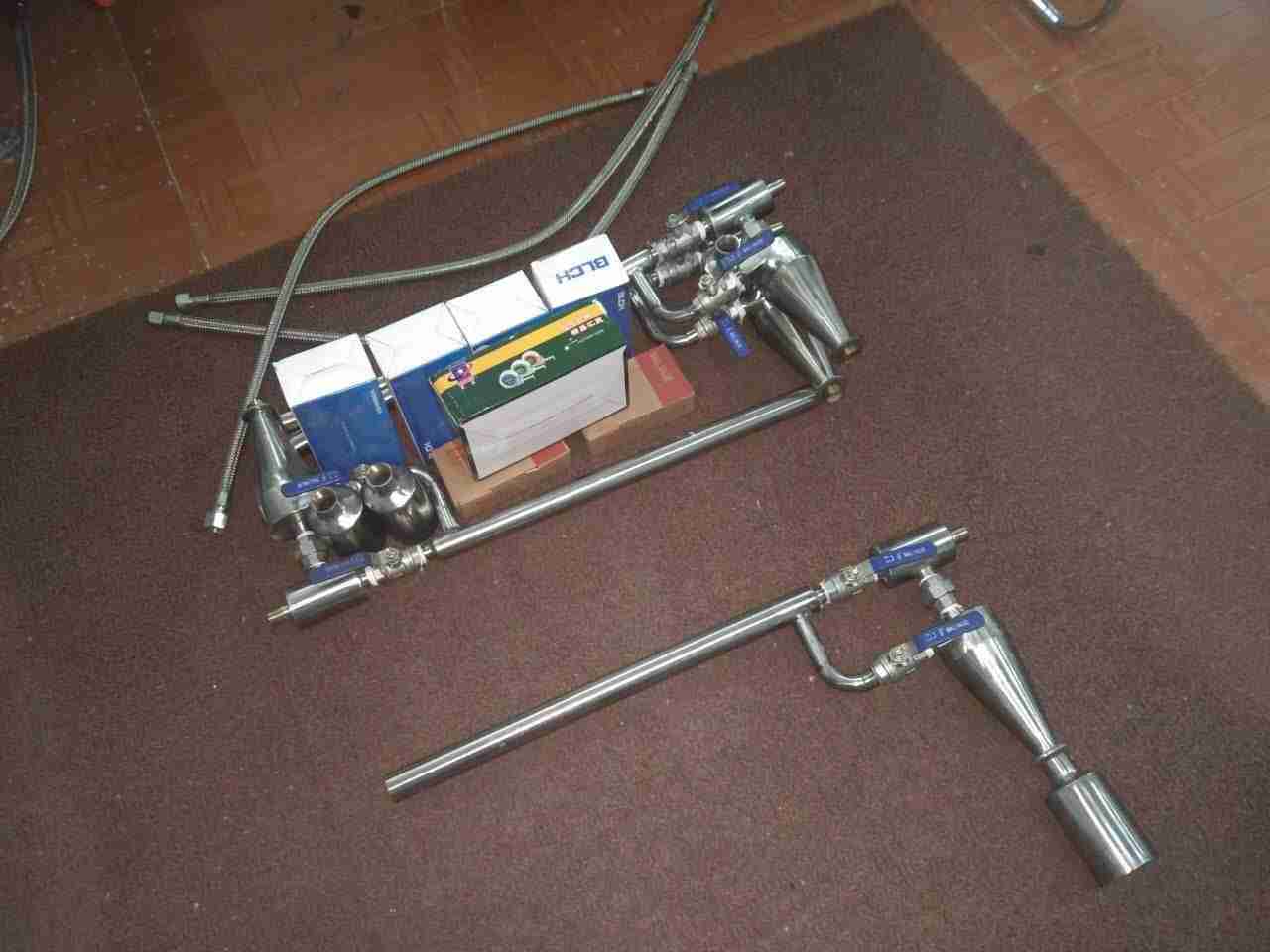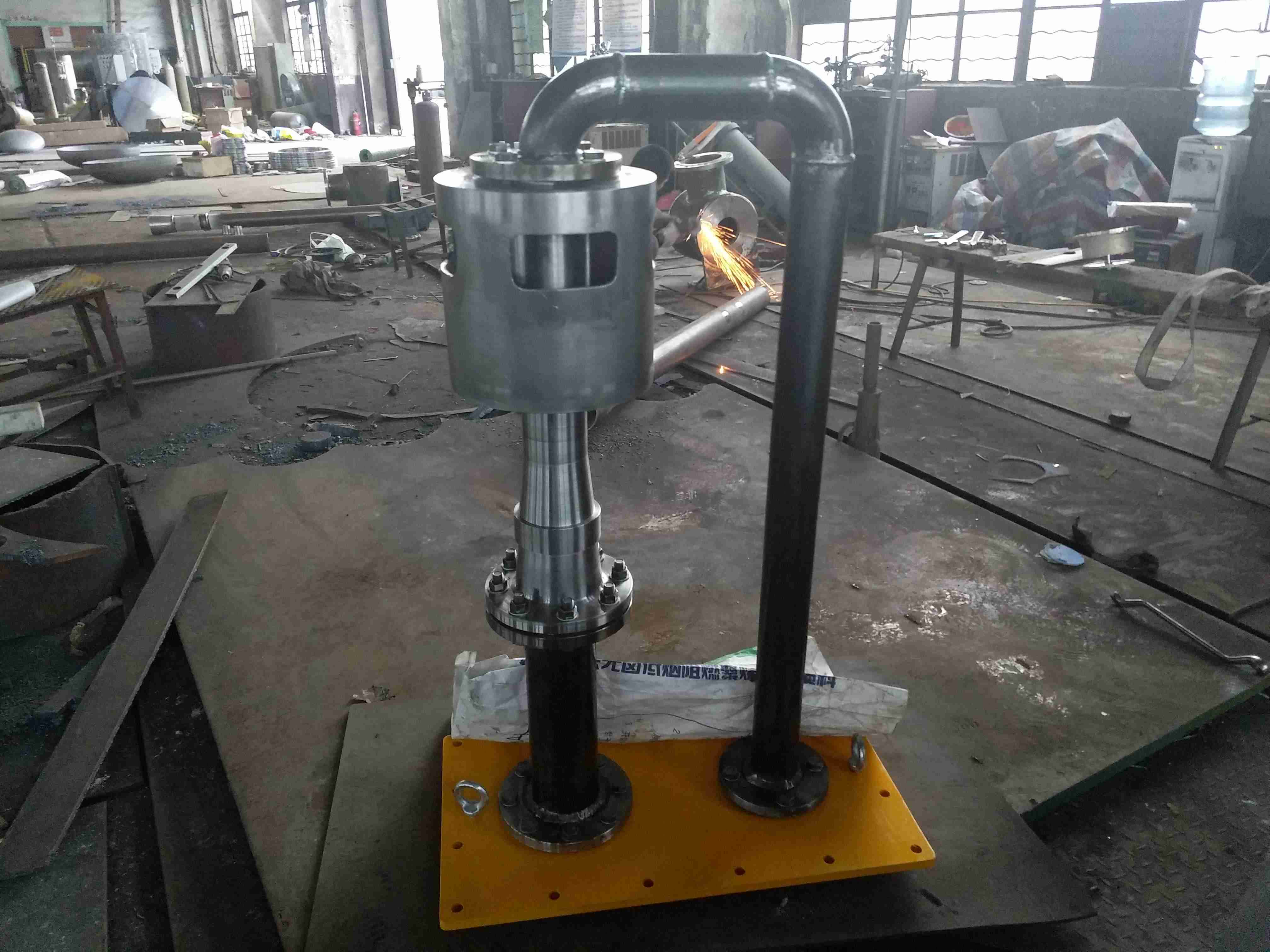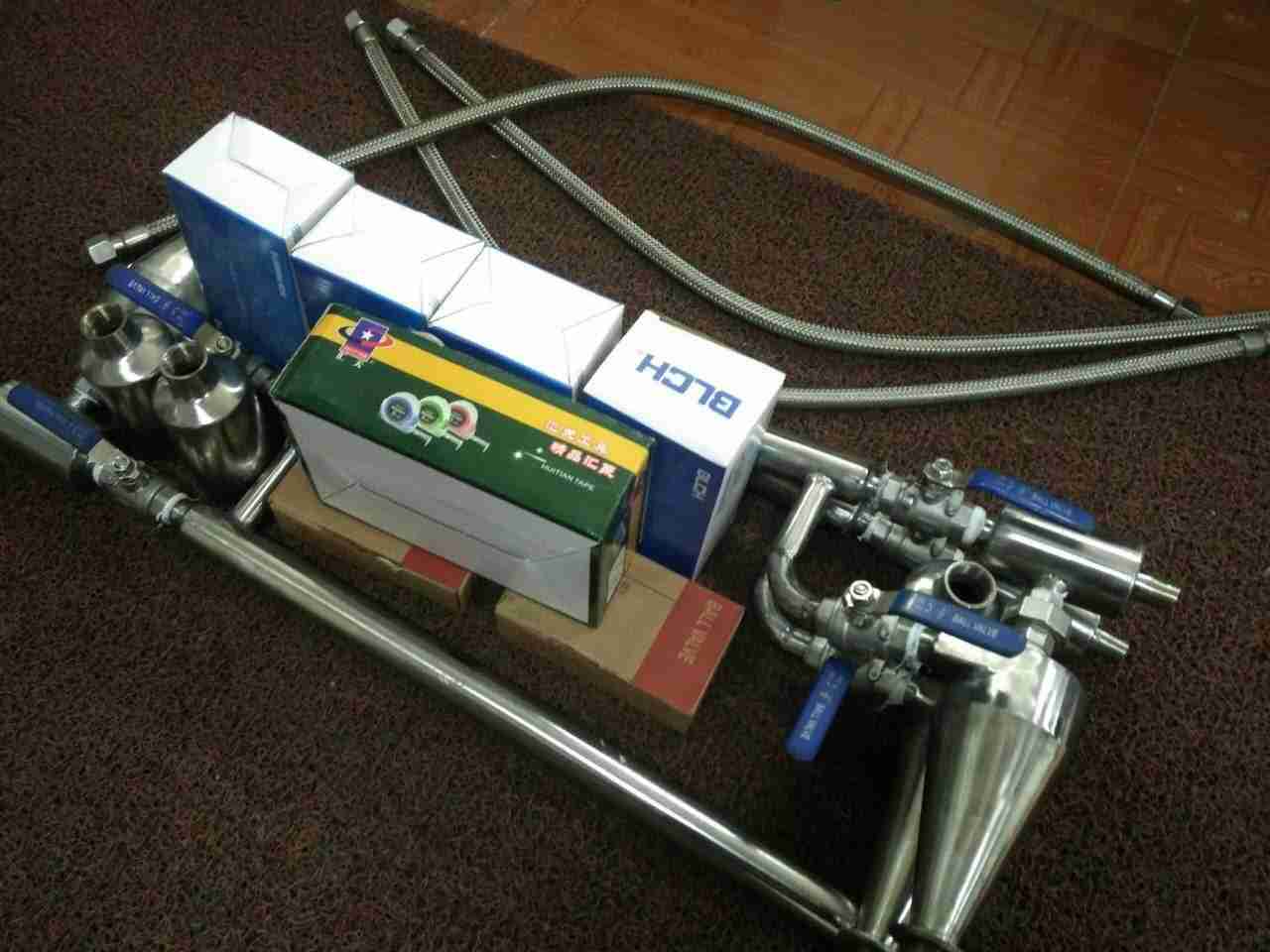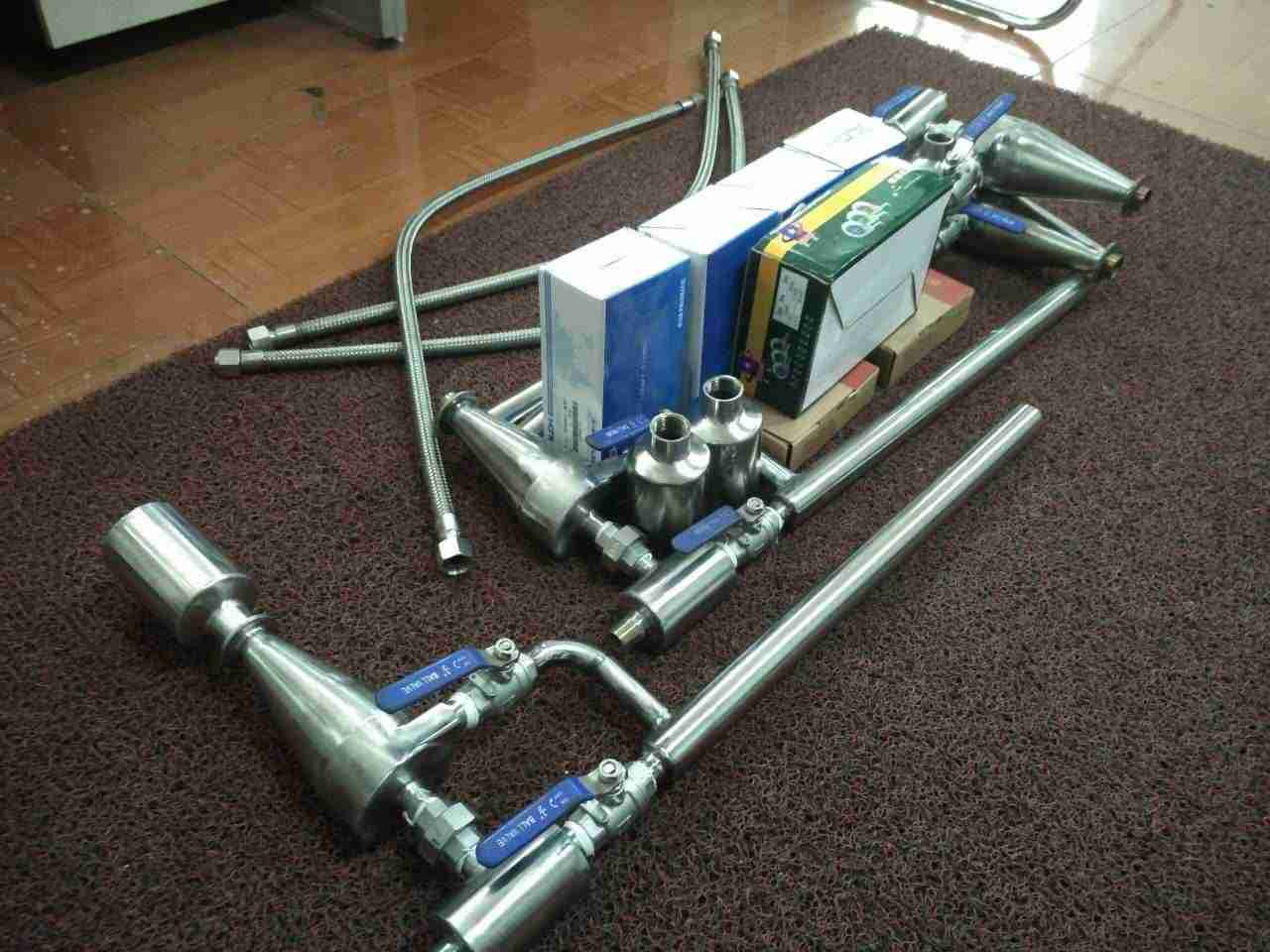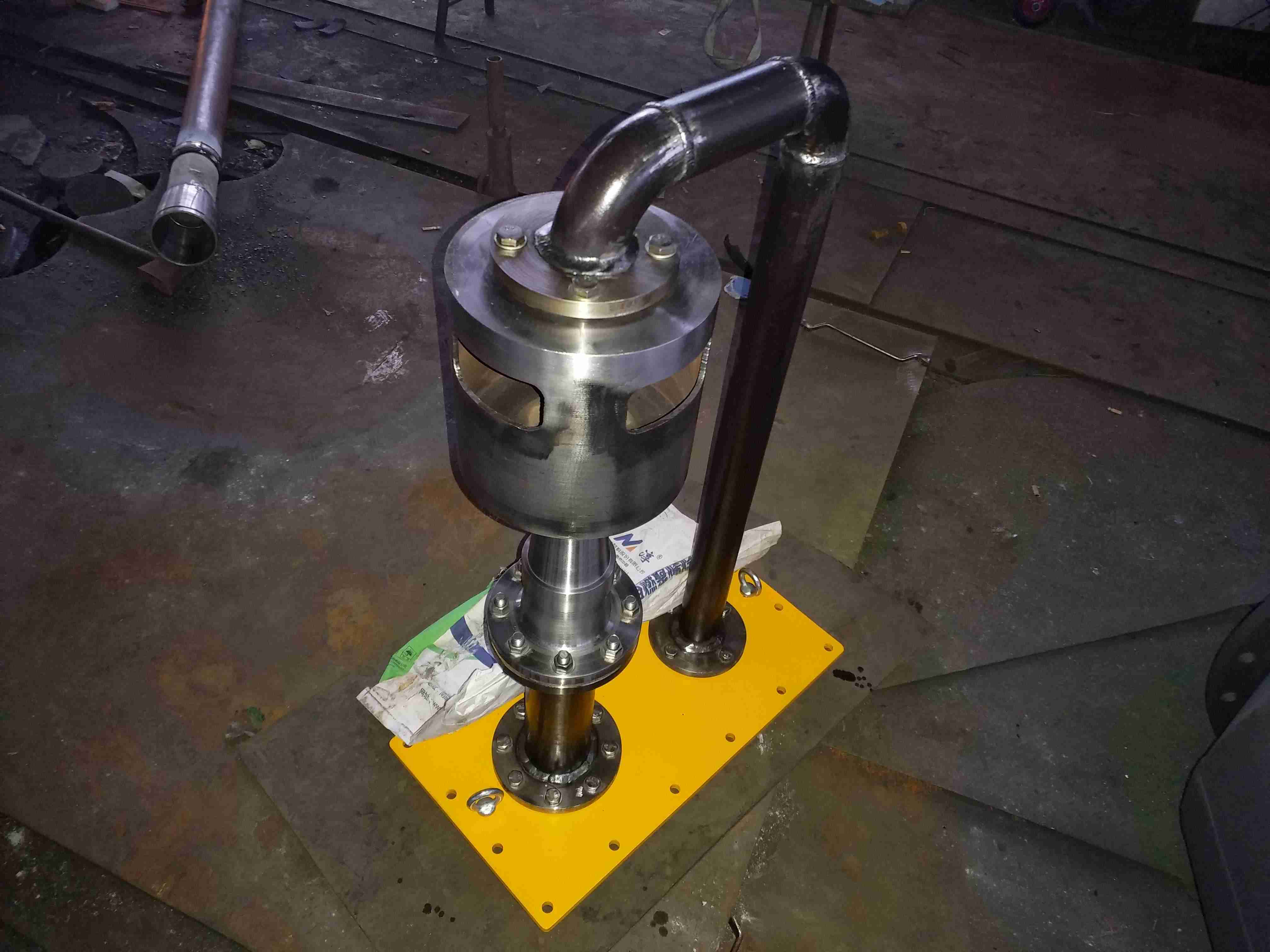Process requirements for replacing stainless steel pipes in oil coolers:
Lianyungang Lingdong Electromechanical Equipment Co., Ltd. - a manufacturer of oil cooler tube replacement and maintenance. We undertake various types of tube coolers, condensers, oil coolers, chillers, air coolers, condensers, and other heat exchange and cooling tube replacement and renovation projects. Change the material of the pipes, such as copper pipes, stainless steel pipes, titanium pipes, etc.
1. Preparation of stainless steel pipe: After passing the inspection, cut the stainless steel pipe according to the size of the oil cooler. The stainless steel pipe should be 4-5 millimeters longer than the pipe plate. Remove burrs from both ends of the stainless steel pipe, polish the expanded part of the pipe smooth, and perform tempering treatment at about 50 millimeters at both ends.
2. Remove old stainless steel pipes: Use a semi-circular triangular chisel to remove them. When removing, be careful not to damage the pipe plate. Polish the stainless steel pipes, remove the old stainless steel pipes, clean the pipe holes on the pipe plate, polish them with a fine sandcloth, and wipe off the dust with a cloth.
3. Pipe threading and expansion: After both the pipe plate and stainless steel pipe are prepared, they can be threaded through the stainless steel pipe. Be careful not to use too much force or force, align them with your own hole position, and install them. The exposed parts at both ends of the pipe should be equal. The diameter of the pipe plate hole is slightly larger than the pipe diameter, about 0.5 millimeters, and should not be too large or too small. After the stainless steel pipe is threaded, a pipe expander can be used to expand the mouth. When expanding the pipe, the force and speed should not be too large or too small. The length of the expanded pipe should be two-thirds of the thickness of the pipe plate, and should not be greater than the thickness of the pipe plate. After expansion, both ends should be flanged with a punch.
4. Replacing stainless steel pipes requires sending the original equipment to our company for replacement, which reduces the speed and relative cost of replacing pipes on site.
Oil cooler tube replacement -:
-We are engaged in the transformation of oil coolers, tube bundles, and copper tubes to stainless steel tubes. 304/316l stainless steel tube heat exchange tubes have high resistance to vibration, scaling, and corrosion. Stainless steel tube heat exchange tubes have overcome the previous challenges in the industry, such as reducing wall thickness to enhance heat transfer or using rolling screws on the tube wall to weaken tube stiffness, resulting in reduced wall thickness, enhanced heat transfer, and increased stiffness. At the same time, they have anti vibration and anti scaling properties.
Leakage of condenser oil cooler and lack of copper pipes:
The condenser is an essential cooling equipment for steam turbine generator units. Due to the pollution of rivers, lakes, and seawater systems, the corrosion rate of the cooling pipes in the condenser is intensified, resulting in frequent leakage of the condenser, which seriously affects normal production- Copper pipes are prone to corrosion such as ammonia ions and sulfides, which can cause leakage. At the same time, due to the unsmooth inner wall of copper pipes, microorganisms and various dirt are easily attached, greatly reducing the use of copper pipes. The use of copper pipes in oil coolers is similar to that of condensers. Basic copper pipes are susceptible to corrosion such as ammonia ions and sulfides, which can cause leakage. At the same time, due to the unsmooth inner wall of copper pipes, microorganisms and various dirt are easily attached, greatly reducing the use of copper pipes.
Introduction to welded steel pipes for oil cooler - tube bundle replacement:
Oil cooler tube bundle welded steel pipes are mainly used for condensers and heaters in industries such as thermal power generation, chemical industry, and steel. They are replaced with 304/316l stainless steel pipes, oil cooler with 304/316l stainless steel pipes, chiller with 304/316l stainless steel pipes, sampling cooler with 304/316l stainless steel pipes, extraction cooler with 304/316l stainless steel pipes, heat exchanger with 304/316l stainless steel pipes, and shaft seal heater with 304/316l stainless steel pipes, High pressure heater - replace 304/316l stainless steel pipes, low pressure heater - replace 304/316l stainless steel pipes, air preheater, air cooler, etc. Oil cooler - stainless steel tube bundle for heat exchange Specification: diameter Ф 12~ Ф 76mm, with a wall thickness of 0.2-3.0mm, available in two lengths: fixed and indefinite- The types of stainless steel pipes used include 304, 304L, 316, 316L, 317, and 317L.
The welded steel pipe used for the oil cooler tube bundle is manufactured using imported pipe manufacturing equipment, which is equivalent to or slightly stronger than stainless steel pipes. The stainless steel pipes used for basic oil coolers and condensers have welded pipes, and the metallographic structure of the weld seam is slightly different from that of the base material, strength, and other mechanical properties. Due to the uniform thickness and smooth surface of the stainless steel pipe strip, it is indeed better than cold drawn, hot rolled, and seam stainless steel pipes of the same material. The elongation is greater than 35%, and the hardness is small, making it easy to expand and connect.
The stainless steel pipes for the cooling pipes of the oil cooler have the following features:
1. Stainless steel tube heat exchange tube heat transfer energy. Due to the use of thin-walled stainless steel tubes with a wall thickness of 0.5-0.7mm, the overall heat transfer energy is improved. Under the same heat exchange area, the overall heat transfer coefficient is 2.124-8.408% higher than that of copper tubes.
2. Due to the use of American standard AISl304, 316l and other stainless alloy steels for the pipes, they have high hardness and the rigidity of stainless steel pipes is also significantly improved. Therefore, it has strong impact energy and anti vibration energy of high-temperature steam.
3. Due to the smooth inner wall of the pipe, the thickness of the bottom layer of the boundary laminar flow is reduced, which not only enhances heat transfer but also improves the ability to resist scaling.
4. Heat exchange tube installation process - energy, using the expansion tube technology of transmission, the outer diameter tolerance of stainless steel tubes is consistent with that of copper tubes, and there is no need to change the machining tolerance of tube plate holes, which is conducive to direct on-site selection and convenient for the unit oil cooler to change tube bundles.
5.304/316l stainless steel heat exchange tubes are economical. Under the same heat exchange area, the cost of stainless steel tubes is about 80% of the cost of copper tubes, and can be directly transformed into tube bundles.
In order to eliminate welding stress on heat exchange tubes, heat treatment is carried out at a high temperature of 1050 ℃ under protective gas.
7. All pipes are subjected to pressure difference method for leakage inspection, with a pressure test reaching 1.0Mpa and a pressure drop of 5 minutes.
The general principle for oil cooler tube bundle replacement is:
1. No severe corrosion leakage, use as long as possible, erosion and wear, vibration resistance, high heat transfer coefficient, and reasonable structure. For decades, copper pipes have been used in my condensers, oil coolers, chillers, and other equipment due to their high thermal conductivity.
2. In practice, some copper pipes of the condenser are subjected to severe ammonia corrosion, while others are subjected to severe wear and tear. These two phenomena cause copper pipes to leak tightly, greatly reducing the use of copper pipes, reducing the safety and economy of unit operation, and increasing the time for shutdown and replacement of copper pipes. Therefore, many people have started to consider the issue of condenser pipe materials.
In recent years, stainless steel heat exchange tubes have been widely used in condensers, oil coolers, air coolers, low-pressure heaters, high-pressure heaters, air coolers, heat exchangers, chillers, and air preheaters. According to incomplete calculations, the units used are over 50%, including 50-300MW units. The use of 304/316l stainless steel heat exchange tubes has broken the traditional concept of only using copper tubes, improved equipment safety and economy, and reduced investment.
However, there are still many people who lack interest in stainless steel heat exchange tubes used in oil coolers and tube bundles. The main reason is that the thermal conductivity of stainless steel tube heat exchange tubes is much lower than that of copper tubes, which may affect heat transfer. For this reason, relevant units have conducted many studies on the overall heat transfer coefficient of stainless steel heat exchange tubes used in condensers, and have achieved great results. More and more power plants are replacing copper pipes with stainless steel pipes.
Oil cooler - using stainless steel tubes for tube bundle replacement -:
-High temperature steam, erosion resistance, anti scaling, anti oxidation corrosion, strong vibration resistance, and wear resistance.
Heat exchange - material -, thin tube wall, smooth inner wall, and enhanced heat transfer.
Safety: High temperature steam, erosion resistance, strong vibration resistance.
Economy - Same heat exchange area, cost savings (about 80/100 of copper pipes).
Construction plan for oil cooler - tube bundle replacement:
I have 15 years of experience in the design, manufacturing, technical transformation, installation, cooling pipe replacement, anti-corrosion and sealing of condensers, heat exchangers, oil coolers, chillers, air coolers, high-pressure heaters, low-pressure heaters, and chillers in thermal power plants. There is an engineering department and a construction team for condenser renovation in three industries. There are currently 7 high-level technical personnel and more than 50 technical workers for various operations, equipped with a complete set of measuring instruments. The technical personnel of the company design a construction plan based on the specific site conditions such as the user's unit capacity, and experienced professionals carry out construction in accordance with the project content, process requirements, safety measures, and the national power engineering construction standard DL5011-92 specified in the contract, ensuring the quality, timely and complete completion of the project. They have accumulated rich experience in long-term condenser and heat exchanger design, technical transformation, and cooling pipe exchange process, Short construction period, low engineering cost, and stable construction. Small equipment such as oil coolers require the original equipment to be shipped to our company for tube bundle replacement, which results in a relatively high speed and cost of tube replacement on site. Large equipment such as condensers require on-site pipe replacement and renovation. If there is a need for tube replacement, you can contact Lianyungang Lingdong. I welcome a win-win cooperation with you.
Oil cooler pipe replacement report - Notice:
1. The name of the equipment that needs to be replaced for maintenance (such as: oil cooler, condenser, oil cooler, air cooler, cooler, and other tubular equipment replacement).
2. Equipment service life?
3. What is the reason for the need for tube replacement and renovation of the equipment?
4. What is the material of the original equipment bundle for the oil cooler- What material tube should be replaced with? Such as copper pipes, stainless steel pipes, titanium pipes, etc.
5. Maintenance requirements for oil cooler: Is it to replace the tube or the core? Core replacement means replacing all the partitions and tube plates.
6. Oil cooler pipe size: diameter? Wall thickness? Manager? How many pipes need to be replaced in total?
The specifications and technical parameters of 304/316L stainless steel heat exchange tubes below the oil cooler - tube bundle are for reference only. For detailed parameters, please contact us by phone! Based on the international pipe bundle, corresponding pipe bundles can be designed according to customer requirements!
| 不銹鋼管換熱管材料 | O | SI | MN | P | S | NI | CR | MO | n-2000 | n-4200 |
| 304不銹鋼管換熱管≤ | ≤0.080 | 0.75 | 2.00 | 0.040 | 0.030 | 8.00-11.00 | 18.00-20.00 | - | 2000 | 4200 |
| 304L不銹鋼管換熱管≤ | 0.035 | 0.75 | 2.00 | 0.040 | 0.030 | 8.00-13.00 | 18.00-20.00 | - |
|
|
316不銹鋼管換熱管 ≤
? | 0.080 | 0.75 | 2.00 | 0.040 | 0.030 | 10.00-14.00 | 16.00-18.00 | 2.00-3.00 | 8300 | 9600 |
| 316L不銹鋼管換熱管≤ | 0.035 | 0.75 | 2.00 | 0.040 | 0.030 | 10.00-15.00 | 16.00-18.00 | 2.00-3.00 | 4500 | 7043 |
| N | O | H | FC | O | AI | V | 3174 | 4150 | 4680 |
| 不銹鋼換熱管∠ | ∠0.02 | 0.05 | 0.015 | 0.25 | 0.12 | 2.5-3.5 | 2.0-3.0 |
|
|
|
| 不銹鋼換熱管型號(hào) |
|
| 1 | Φ14×0.5 | Φ14×0.6 | Φ14×0.7 | Φ14×0.8 |
|
|
|
| 2 | Φ15×0.5 | Φ15×0.6 | Φ15×0.7 | Φ15×0.8 |
|
|
|
| 3 | Φ16×0.5 | Φ16×0.6 | Φ16×0.7 | Φ16×0.8 |
|
|
|
| 4 | Φ18×0.5 | Φ18×0.6 | Φ18×0.7 | Φ18×0.8 |
|
|
|
| 5 | Φ19×0.5 | Φ19×0.6 | Φ19×0.7 | Φ19×0.8 |
|
|
|
| 6 | Φ20×0.5 | Φ20×0.6 | Φ20×0.7 | Φ20×0.8 | Φ20×1.0 |
|
|
| 7 | Φ22×0.5 | Φ22×0.6 | Φ22×0.7 | Φ22×0.8 | Φ22×1.0 | Φ22×1.2 |
|
| 8 | Φ25×0.5 | Φ25×0.6 | Φ25×0.7 | Φ25×0.8 | Φ25×1.0 | Φ25×1.2 | Φ25×1.5 |
| 9 | Φ26×0.5 | Φ26×0.6 | Φ26×0.7 | Φ26×0.8 | Φ28×1.0 | Φ28×1.2 | Φ28×1.5 |
| 10 |
| Φ30×0.6 | Φ30×0.7 | Φ30×0.8 | Φ30×1.0 | Φ30×1.2 | Φ30×1.5 |
| 11 |
|
| Φ32×0.7 | Φ32×0.8 | Φ32×1.0 | Φ32×1.2 | Φ32×1.5 |
冷油器型號(hào)規(guī)格技術(shù)參數(shù):
| 汽輪機(jī)型號(hào) | 冷油器型號(hào) | 冷卻面積 m2 | 冷卻油量t/h | 設(shè)計(jì)溫度℃ | -高工作水溫℃ | 設(shè)計(jì)水量t/h | 配套臺(tái)數(shù) | 冷油器備注 |
| 進(jìn)油 | 出油 |
| N1.5MW | LY-10 | 10 | 8 | 55 | 45 | 33 | 25 | 1 |
|
| N3MW | LY-10 | 10 | 8 | 25 | 2 |
|
| N6MW | LY-12.5 | 12.5 | 8.7 | 25 |
|
| N12MW | LY-17.5 | 17.5 | 12.6 | 30 |
|
| N15MW | LY-20 | 20 | 12.6 | 30 |
|
| N20MW | LY-30 | 30 | 27 | 65 |
|
| N25MW | LY-35 | 35 | 30 | 85 |
|
| N30MW | LY-42 | 42 | 36.9 | 102 |
|
| N50MW | LY-48 | 48 | 40 | 112 |
|
| N100MW | LY-55 | 55 | 47 | 135 |
|
N125MW
N135MW | LY-60 | 60 | 52.8 | 150 |
|
| N200MW | LY-75 | 75 | 72 | 170 |
|
| N300MW | LY-95 | 95 | 120 | 200 |
|






